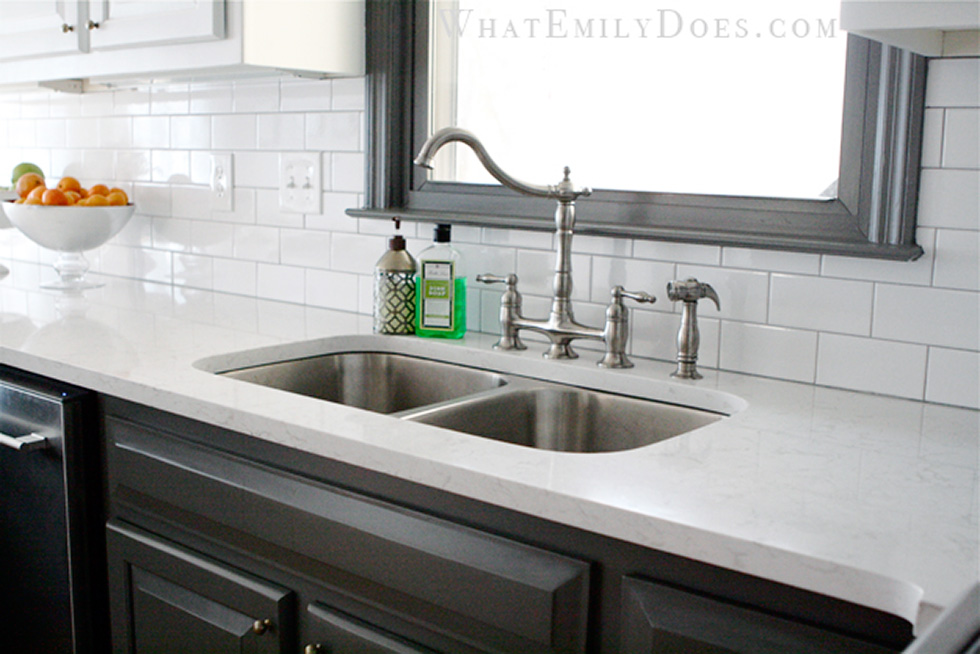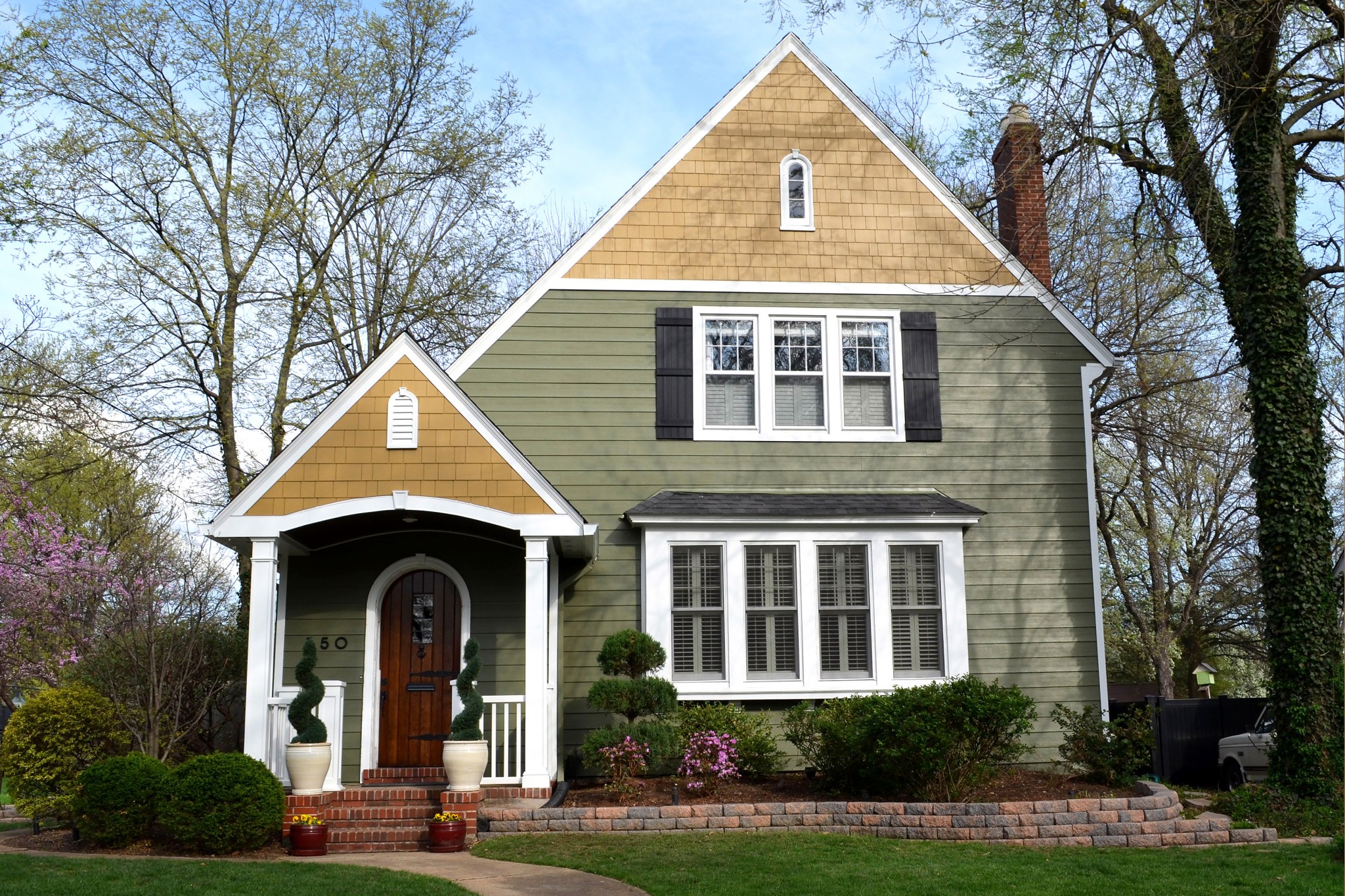Homeownership should be about enjoying your home -- not being a slave to it. The trick is to choose materials and products that make maintaining your home a snap.
Here are eight projects that'll give your home a gorgeous makeover — and give you your weekends back.
#1 Swap Out Your Siding With Fiber-Cement
Fiber-cement siding is the curb appeal champ that seems to never age the way wood does. It comes in a variety of shapes and forms: horizontal lap boards, shingles, and vertical board-and-batt style. Simulated wood graining is nearly indistinguishable from the real thing at about half the cost.
Why it’s low-maintenance: Tough, long-lasting fiber-cement siding is dimensionally stable when the weather changes, which puts less stress on paint finishes, helping preserve those good looks for years (and letting you enjoy a big reduction in upkeep). It’s also rot-, fire-, and insect-proof. Warranties range from 30 to 50 years.
Newer versions feature durable, baked-on paint finishes guaranteed to last 15 years. That means less repainting and touch-up work than wood siding, reducing the time and money you’d spend on routine maintenance. And unlike vinyl siding, fiber-cement takes paint well if you should decided to change colors.
Life expectancy: 50+ years; 15 years on pre-painted and finished siding
Maintenance cycle: Repaint every 15+ years.
Cost: $5 to $11 per square foot, installed.
The next-best thing: Vinyl siding is low-cost (about 20% to 40% cheaper than fiber-cement), never needs painting, and is rot- and insect-proof. It’s also lightweight and easy to install, which helps keep installation costs low. It has an expected lifespan of about 35 years.
However, it isn’t fireproof, nor does it take paint well, which means you’re limited to the colors offered by the manufacturers.
#2 Switch to Metal for a "Forever" Roof

Metal roofing is one of the toughest, most maintenance-free roofing materials made. In addition to the traditional standing seam panels -- the ones with ridges running from the peak to the eave -- today’s metal roofing includes products that mimic slate, clay tiles, and wood shakes.
Metal roofing also is extremely fire-resistant -- in a fire-prone area, having a metal roof may qualify you for a discount on homeowners insurance.
Why it’s low-maintenance: Most metal roofing comes with a 40- to 50-year warranty, and the replacement cycle is almost three times longer than that of three-tab asphalt shingles.
Look for baked-on enamel finishes with rust-proof undercoating that are warranted for the life of the product. The finish won’t crack or shed like asphalt, meaning you won’t be scooping those little granules out of the gutter every spring and fall.
So you know: There are two types of rust-proof undercoating. For reliable protection from rust, The Metal Roofing Alliance recommends:
- For galvanized zinc undercoating: A galvanizing thickness level of at least G-90.
- For Galvalume undercoating: Thickness level of AZ-50 or AZ-55.
A metal roof does cost about two to three times more than asphalt shingles. But that doesn’t account for the benefits you reap by not having to repair or replace as often. Here’s to your many maintenance-free weekends.
Life-expectancy: 50+ years
Maintenance cycle: Repair or repaint every 50 years.
Cost: $9 to $12 per square foot, installed.
FYI: Most metal roofing is made with steel, but homeowners in coastal areas should choose aluminum products to protect against rust.
Steel and aluminum are recyclable.
#3 Get Handsome Easy-Care Floors with Laminate

Laminate plank flooring gets the nod here for its ease of installation (it’s a good DIY project), relatively modest cost, and easy-peasy maintenance. We like that it can mimic natural stone and exotic hardwoods like koa and rosewood for a fraction of the cost.
Why it’s low-maintenance: Laminate flooring has a tough, clear plastic wear layer that resists scratches, moisture, and stains; it never needs refinishing during the life of the product. Some are reinforced with aluminum oxide, one of the hardest compounds known. Laminates also are dimensionally stable, so seams won’t open up during changes in temperature and humidity.
Depending on the thickness and composition of the plastic coating, warranties range from 15 to 50 years. Some manufacturers offer lifetime warranties against staining, fading, and wear.
Life-expectancy: 25+ years
Maintenance cycle: Sweep or vacuum as needed; use water sparingly when cleaning.
Cost: Up to $7 per square foot; add $2 to $5 per square foot for professional installation.
#4 Choose Quartz Countertops — They'll Never Stain

Almost 80% of designers responding to a recent survey from the National Kitchen and Bath Association said quartz countertops are their top choice. In addition to being long-lasting, quartz counters come in many colors and unique patterns to go with any motif. It’s composed of about 95% quartz particles with resin binders (quartz is one of the hardest naturally occurring substances). It's about the same price as granite.
Why it’s low-maintenance: Quartz is tough, durable, antimicrobial, and scratch-resistant. It’s almost impossible to stain, and it cleans up easily. It’s completely non-porous and never needs sealing. A 10- to 15-year warranty is standard; some manufacturers offer a lifetime guarantee.
Life-expectancy: 30+ years
Maintenance cycle: Occasional cleaning with mild soap and water.
Cost: $40 to $100 per square foot.
FYI: Quartz is an abundant natural resource. And old quartz countertops can be crushed and reused in new counters
#5 Replace Wood Windows With Fiberglass (No More Warps)

Fiberglass is moisture- and rot-resistant, and won’t warp like wood. They provide good thermal insulating properties. Plus they come pre-finished and look like real wood, or are painted in factory-applied finishes. And they're cheaper than quality wood windows.
Why it’s low-maintenance: Fiberglass is dimensionally stable so it doesn’t warp even under extreme temperatures. Seams are bonded together and won’t separate or have gaps, so repairs are virtually non-existent. That means the window will operate reliably for years.
Fiberglass holds paint well -- a good option if you’re looking to apply your own custom color. The fact that fiberglass doesn’t warp or shrink means paint finishes are long-lasting and touch-up work is rare.
Warranties range from 10 to 20 years, which includes the glass and glass seals.
FYI: The Department of Energy says that windows with an Energy Star label can help lower home energy costs by 7% to 15%.
Life-expectancy: 40+ years
Maintenance cycle: Clean as needed with water and mild detergent; repaint every 10 to 15 years.
Cost: $400 to $730 for a 3-foot-by-5-foot double-hung window, depending on options such as argon gas insulation and low-E coatings.
#6 Opt for Composite Materials to Never Seal a Deck Again

Not so many years ago, composite decking looked about as natural as a used tire. No longer -- today’s varieties do an excellent job of mimicking the color and grain patterns of real wood such as redwood, cedar, and even exotic woods like Brazilian walnut and teak.
Why it’s low-maintenance: Composite decking won’t chip, splinter, or fade. There’s none of the periodic application of deck cleaner or the refinishing required of wood decks. (On occasion, you'll want to hose off dirt.) Composites won’t rot and are impervious to insect attack. Types with antimicrobial coatings won’t harbor mold and mildew. A 20- to 25-year warranty is typical.
Life-expectancy: 25 years
Maintenance cycle: Scrub with soap and water every two to three years.
Cost: $25 to $70 per square foot, installed.
FYI: A lot of recycled materials go into composite decking, including plastic bags, sawdust, and plastic milk jugs.
#7 Take Another Look at PVC for Porch and Deck Railings
Like a lot of imitation items made for outdoors, PVC railing systems for decks and porches have come a long way since the obviously fake systems of not so long ago. More companies have come into the marketplace with PVC aluminum, composite, and fiberglass products that do a good job of looking like well-crafted wood railings and balusters. Hidden fastening methods do away with some of the tackier connectors painfully visible on older systems.
Why it’s low-maintenance: PVC-capped aluminum railing systems are the best of both worlds -- a rust-proof metal core and metal fasteners, all covered with weatherproof PVC. Factory colors are limited, but repainting and touch-up are banished.
Composites are good at looking like expensive woods, and they’ll never need staining or painting. Most systems are combos, with a composite sleeve that slides over a strong, pressure-treated wood post and pre-painted aluminum or composite balusters.
Warranties range from 15 to 25 years.
Life-expectancy: 50+ years
Maintenance cycle: Clean with mild soap and water as needed.
Cost: $15 to $60 per linear foot, depending on style and complexity.
#8 Add An Irrigation System That Knows When To Water (and When Not To)
A weather-sensing, water-conserving irrigation system waters your lawn and landscape plants without your input. It gathers local weather data and automatically adjusts output to provide the right amount of moisture for your landscape’s growing needs.
If you take off on vacation, an automated system continues checking weather conditions and applying the proper amount of water to your trees, shrubs, and lawn.
Some automated irrigation controllers meet EPA guidelines; the EPA estimates that switching a clock-operated system to a weather-sensing, WaterSense-certified system saves the average homeowner 8,800 gallons of water each year. That’s good for the environment, and money in your pocket.
You’ll save on sleep, too. Program your system so that, while you snooze, sprinkler heads run during the wee morning hours, when temps are cool, evaporation is minimal, and water usage is optimized.
Why it’s low-maintenance: Although the system itself needs periodic upkeep, such as draining the lines in winter and occasionally fixing or replacing sprinkler heads, you’ll more than recoup your time by not having to water your plants yourself, dragging out hoses and setting sprinklers by hand.
Warranties include one year for parts, and up to 10 years for some wireless sensors.
Life-expectancy: 50+ years for pipes; five to 25 years for sprinkler heads and valves.
Maintenance cycle: Annual draining of irrigation lines; occasional replacement of sprinkler heads.
Cost: $2,500 to $6,900 for a sprinkler system covering 5,000 square feet; DIY kits for similar size run $1,400 to $1,800.
FYI: If a summer heat wave puts your community under water restrictions, you can program an automated system to comply.
Related: Home Maintenance for People With Better Things to Do
